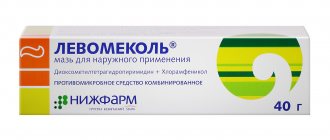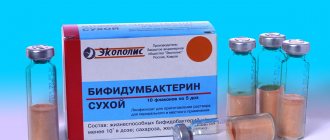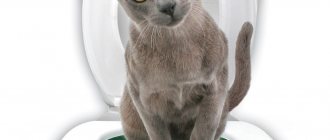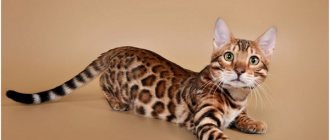What is madder
Madder (popularly known as crapp) is a perennial herbaceous plant that can be found in Georgia, Azerbaijan, Dagestan, and the Crimea.
The plant got its name because of the red pigment contained in the root system. Madder was first used in industry for dyeing fabrics (wool, linen, cotton).
The popular name for madder is krapp.
Both the aerial part of madder and the root have healing properties. But in the treatment of urolithiasis in cats, it is the rhizomes that are used, which are quite powerful in this plant.
To treat urolithiasis in cats, preparations based on madder roots are used.
Medicinal properties of the plant
Madder has a complex of medicinal properties that are useful specifically for the functioning of the urinary system:
- bactericidal - has a detrimental effect on various types of cocci (spherical bacteria);
- anti-inflammatory and antispasmodic - relieves pain that occurs when small stones and sand move through the ureters;
- diuretic - activates the process of urination, helping to wash out small stones.
Madder also affects oxalate and phosphate stones, helping to soften and crush them.
Feedback from cat owners
Our cat Tema, according to an ultrasound, was diagnosed with grade 1 nephritis, signs of cystitis and urolithiasis. For a week we fed our pet canephron, stopcystitis and injected him with ceftriaxone. Nothing helped. In desperation, I started looking for help on the Internet and came across reviews about madder. I went to a 24-hour pharmacy at night to get a life-saving remedy, since it was impossible to watch Temochka’s suffering. Improvement occurred within 3 days after taking this remedy. We fed our pet madder twice a day for a whole month. And now everything is fine with him! Thanks to everyone who recommended this wonderful remedy!
Irina, Russia
A 12 mm stone was found in our cat's bladder. Doctors advised cutting. The cat was in great pain and peed often and with blood. We decided to give her madder dye to drink. As a result, after the first course of treatment, the stone decreased to 8 mm. The course was repeated a month later, and the stone became only 6 mm. After the third month of treatment, no stone was found in the bladder - it passed. I easily found how to cure a pet for urolithiasis on the Internet. It was more difficult to give water to our cat, who has the same character!
Lilia, Russia
Chemical composition of madder
The root system of the plant contains the following substances:
- acids: citric - improves metabolic processes in cells;
- wine - helps normalize digestion;
- apple - regulates metabolic processes in the body;
- ascorbic acid - lowers the level of uric acid in the body, protects cells from damage.
Forms of release of the drug
The drug can be purchased at a regular pharmacy. Madder is available in different forms:
- Pills. Packed in blister and cardboard box. Packaging: 10–60 pieces. One tablet contains 250 mg of active substance (madder dry extract). The tablets are round in shape and have a line in the middle. The color can vary from light to dark brown with patches, a pinkish tint is possible. The price for a package of 10 tablets is from 60 rubles.
- Drops. A more convenient form for use and dosing of the drug. Available in a 50 ml plastic bottle, packed in a cardboard box. The drug costs about 200 rubles.
- Chopped root. This is the raw material for preparing medicinal infusions and decoctions. The root is packaged in 50 g packets in paper or plastic bags. The drug costs from 50 rubles.
- Herbal tea. Contains tea bags for brewing in a mug. 20 filter bags are packed in a cardboard box. Its cost is about 120 rubles.
The drug is produced for humans and is sold in regular pharmacies. But it has also found its application in veterinary medicine. For cats, tablets are most often used or infusions and decoctions are prepared from the crushed root.
Photo gallery: madder preparations in different release forms
Madder drops help dissolve calcium oxalates
Tablets containing madder extract are the most common form of the drug used in the treatment of cats. Infusions and decoctions are prepared from the crushed roots of madder.
It is convenient to brew herbal tea in a mug, but it is more difficult to dose for cats
When to expect treatment results
If you adhere to the correct dosage and give the medicine to your cat regularly, then after 5-6 days you will be able to see an improvement in its condition .
Taking the drug should continue until complete recovery - approximately, the period will be about a month . Longer treatment is often required.
Many cat owners note that thanks to moraine, the disease can be dealt with 100% , and relapses are not observed.
The main thing is that the dosage of the drug is not violated . To avoid harm to your pet, treatment should be started only after consultation with a veterinarian.
Attention! You should not look in the pharmacy for a special madder-based drug intended for the treatment of cats. You can buy regular tablets that are used by people; they are perfect for animals.
Indications for use for cats
Madder extract is used to treat urinary tract diseases in cats. This is usually accompanied by the following symptoms:
- increased frequency of urination, with little urine being released (sometimes just a few drops);
- the appearance of impurities in the urine (blood, pus, sand);
- cloudy urine (contains impurities that are not visible to the human eye);
- increased body temperature (above 39 degrees);
- lack of appetite, lethargy.
Video: urolithiasis in cats
Is catheterization required for your pet during therapy?
Your veterinarian may prescribe a comprehensive treatment for your cat , including the use of a catheter. It should be used carefully, since catheterization is an extremely painful process .
It should also be taken into account that the male urethra is smaller and longer in diameter than the female urethra, so catheterization will be even more uncomfortable for them. When a catheter is inserted, the urethra is injured and swells , as a result of which it becomes even narrower.
If the cat was treated in this way, you should not count on quick results from using madder. Catheterization must be treated with extreme caution and remember that an inexperienced veterinarian can pierce the animal's urethra with a catheter, thereby worsening an already difficult situation.
Instructions for use and dosage of madder for the treatment of cats
Treatment of urolithiasis is a complex process that requires a set of measures. It must be carried out under the supervision of a specialist. Therefore, independent use of madder for your pet is highly not recommended.
The use of madder depends on the specific form of the drug.
The drug is approved for use in kittens from 1 month of age.
Pills
Madder tablets are most often purchased for the treatment of cats:
- The tablet is divided into 4 parts.
- 1/4 is crushed, diluted in 25 ml of boiled water.
- Draw the resulting solution into a syringe without a needle at the rate of 1 ml per 1 kg of pet’s weight.
- The drug is poured from a syringe into the pet’s mouth 2 times a day before meals.
- The course of treatment is 1–2 months. Improvements in the condition are usually noticeable starting from the 3rd day of treatment.
In case of a complex course of the disease (for example, when there is no urination at all), an intensive course of therapy is carried out. The drug is calculated at 2 ml per 1 kg of weight, and is given to the cat 4 times a day. This dosage and frequency continue for 4 days, after which they switch to the standard regimen.
Video: how to give liquid medicine to a cat
How to prepare and use decoction and infusion
To prepare a decoction, crushed roots of the plant are used:
- 1 tbsp. l. roots are poured with a glass of boiling water.
- Keep on low heat for 10 minutes.
- Take 10 ml from the resulting decoction and dilute it with 100 ml of boiled water.
- The cat is given 2 ml 2 times a day before meals.
The drug is given to the cat from a syringe without a needle.
You can also prepare an infusion. It is recommended to make it from madder root powder:
- 1 teaspoon of powder is poured into a glass of cold water and left for 8 hours.
- Then it is filtered, the resulting liquid is set aside, and the sediment is poured again, but with a glass of boiling water for 15 minutes.
- Strain and mix both resulting liquids in one container.
- The dosage and regimen are identical to the decoction.
Madder in the treatment of urolithiasis
About the article
9343
0
Regular issues of "RMZh" No. 25 dated December 15, 2005 p. 1702
Category: General articles
Author: Pak L.G.
For quotation:
Pak L.G. Madder in the treatment of urolithiasis. RMJ. 2005;25:1702.
Urolithiasis (UCD) is one of the most common urological diseases, detected in all age groups and most often in working age, characterized by relapses and often severe course. The annual incidence of urolithiasis in the world ranges from 0.5 to 5.3%, and there is a tendency for this figure to increase. In Russia, 38.2% of the structure of urological diseases is caused by ICD.
KSD is a metabolic disease caused by various endogenous and/or exogenous causes, often is hereditary and is determined by the presence of a stone in the urinary system [1]. The etiology and mechanism of development of ICD are not fully known. It is recognized that this is a polyetiological disease associated with complex physicochemical processes occurring both in the body as a whole and at the level of the urinary system. Factors contributing to the development of KSD can be divided into exogenous and endogenous. The first group includes the nature of nutrition (a large amount of protein in the diet, insufficient fluid intake, deficiency of certain vitamins, etc.), physical inactivity, and also play a role in age, gender, race, environmental, geographical, climatic and living conditions, profession, intake of certain medications. Endogenous factors include genetic factors, urinary tract infections and their anatomical changes leading to impaired urine outflow, endocrinopathies, metabolic and vascular disorders in the body and kidney [4,5]. Under the influence of these factors, there is a disruption of metabolism in biological environments and an increase in the level of stone-forming substances (calcium, uric acid, etc.) in the blood serum and, as a consequence, an increase in their excretion by the kidneys and supersaturation of urine. In this regard, salts fall out in the form of crystals, which entails the formation of first microliths and then urinary stones. However, oversaturation of urine alone is not enough to cause stone formation. For its formation, other factors are necessary: impaired urine outflow, urinary tract infection, changes in urine pH (normally this value is 5.8–6.2) and others [2]. There are many classifications of urinary stones, but the mineralogical classification is currently the most widely used [1]. Up to 70–80% of urinary stones are inorganic calcium compounds: oxalates (wedelite, wevelite), phosphates (whitlockite, apatite, carbonatapatite), etc. Stones made from uric acid derivatives occur in 10–15% of cases (ammonium and sodium urates, uric acid dihydrate), and magnesium-containing stones in 5–10% of cases (newerite, struvite). And the occurrence of protein stones (cystine, xanthine) is least common - up to 1% of cases. However, mixed stones are most often formed in the urine. The need to know the composition of stones is due to the peculiarities of methods of removal and conservative anti-relapse treatment for a particular type of stone. ICD is characterized by a complex of symptoms [5]. This is pain (dull or sharp, constant or intermittent, varying in localization), microhematuria, pyuria (arising as a result of infection, but it must be remembered that pyelonephritis often precedes nephrolithiasis), obstructive anuria. The addition of an inflammatory process to the urinary tract significantly complicates the course of the disease, promotes relapses and rapid stone growth. When diagnosing nephrolithiasis, one must follow the classical scheme: collection of patient complaints and anamnesis data, physical examination, laboratory, radiological, radioisotope and ultrasound examinations are necessary. The most common and informative methods for diagnosing urolithiasis are radiological. After a clinical examination of the patient and determination of the chemical composition of the stone, a treatment program is developed, individual for each patient, taking into account concomitant pathology. Treatment of KSD can be surgical (percutaneous nephrolithotripsy, extracorporeal lithotripsy, X-ray endourological operations and “traditional” open operations) and conservative. KSD is often considered primarily as a surgical disease, and drug therapy is classified as symptomatic or used as a stone-expelling therapy for small-sized stones. The exception is stones made from uric acid salts - urates, which are dissolved by citrate mixtures (uralite U, blemarene). However, conservative therapy is one of the stages in the complex treatment of the patient [5]. In conservative therapy, the following areas are distinguished: 1) identification and correction of metabolic disorders; 2) anti-inflammatory therapy; 3) impact on organ hemodynamics; 4) immunomodulation. For this purpose, diet therapy, control of daily fluid intake, medications, physiotherapeutic and balneological procedures, herbal medicine, physical therapy, and spa treatment are used. Rational dietary therapy for urolithiasis is very important and depends primarily on the composition of the removed stones and identified metabolic disorders [1–3]. When urate stones form, the patient must exclude from the diet foods high in purine compounds, that is, those that promote the formation of uric acid (meat and meat broths, sausages, offal - brains, kidneys, liver, as well as legumes, coffee, chocolate, cocoa). It is important to avoid drinking alcohol. It is recommended to eat vegetables; the daily fluid intake should be 2.5–3.0 liters to achieve a urine volume of more than 2 liters/day. In case of calcium-oxalate urolithiasis, it is necessary to limit the intake of foods high in calcium, ascorbic acid and oxalate, that is, milk and dairy products, cheese, chocolate, green vegetables (lettuce, sorrel, spinach, etc.), black currants, tea, cocoa . The daily volume of fluid should be at least 2 liters per day. If you have calcium phosphate urolithiasis, you should avoid consuming foods rich in inorganic phosphorus: fish products, cheese, milk and dairy products. Meat, flour dishes, vegetable fats are recommended. Daily fluid intake should reach 2–2.5 liters per day. For cystine urolithiasis, the daily volume of fluid consumed should be increased to 4 l/day. The use of medications has not lost its relevance. Thanks to this, it is often possible to achieve spontaneous passage of stones (antispasmodics, both neurotropic and myotropic, a-blockers), relieve pain (antispasmodics, analgesics) and the inflammatory process (non-steroidal anti-inflammatory and antibacterial drugs), and correct biochemical changes in the blood and urine (thiazide diuretics, magnesium and vitamin B6 preparations). When complications of urolithiasis develop, antiplatelet agents and antiazotemic agents, drugs that improve microcirculation and angioprotectors are prescribed [2]. Moreover, both synthetic and herbal medicines are used. In recent years, there has been a tendency towards an increasingly widespread use of plants as medicines, since they have a gentler effect on the body, are better tolerated by patients, and are much less likely to cause adverse and allergic reactions. The history of herbal medicine goes back a long way. Sculptural images that have reached us and the first written monuments of India and China, the Middle East and Egypt indicate the use of plants for medicinal purposes. The saying of the medieval scientist, philosopher and physician Avicenna is world-famous: “The doctor has three weapons: the word, the plant, the knife.” And the “Canon of Medical Science” he wrote was translated into many languages of the world and for a long time was a reference book not only for Eastern, but also for European doctors. The author described about 900 types of medicinal plants and methods of using them. A new doctrine about medicinal plants was created in Rome by the famous physician and pharmacist Claudius Galen, who was one of the initiators of the creation of a standard technology for obtaining medicinal drugs (tinctures, extracts, etc.) from plant materials. In our country, work on the study and procurement of medicinal plants began in 1919, and since 1931, all research and scientific-production activities in the field of medicinal plant growing have been concentrated in the All-Union Scientific Research Institute of Medicinal and Aromatic Plants (VILAR). One of VILAR's developments is Marena. This preparation contains an extract of the madder plant (Rubia tinctorum L.) and its Georgian variety Rubia tinctorum L var. iberica Fisch., as well as anthraquinones and their derivatives, organic acids, proteins, sugars and pectins. Madder extract has long been known as a natural diuretic and antispasmodic. It helps loosen urinary stones, especially those containing calcium and magnesium phosphates. Due to its property of reducing the tone of smooth muscles with a subsequent increase in its peristalsis, Madder promotes the painless expulsion of small stones and sand in patients with urolithiasis. The use of this drug leads to a reduction in pain and an improvement in the general condition of patients. Indications for use in urolithiasis: – when surgical intervention is undesirable or impossible; – before surgery, and also as a prophylactic against relapses after surgery for nephrolithiasis; – with inflammatory phosphaturia. Directions for use and dosage: taken orally, 1-2 tablets (0.5 g) 3 times a day. For a single dose, the dose can be increased to 3 tablets 3 times a day. The tablets must first be dissolved in 1/2 cup of warm water. The course of treatment is 20–30 days, and repeated courses of treatment are possible after 4–6 weeks. If urine suddenly turns brownish-red, it is necessary to reduce the dose or temporarily interrupt the course of treatment. Madder extract has a number of advantages over synthetic drugs. Thus, with its use there are no complications and undesirable side effects, the combination of antispasmodic and diuretic action helps to improve kidney function, reduce pain during nephrolithiasis, which is especially important for chronic processes in the urinary tract, and, of course, the diuretic effect of Madder Extract is more gentle, than modern synthetic drugs. It is important that this drug can be used as a prophylactic agent in the postoperative period. Indeed, even after surgical intervention, patients with urolithiasis require dynamic follow-up and treatment for 5 years to prevent relapses of stone formation. Preventive treatment should be individual for each patient, depending on the clinical form of the disease, the chemical composition of urinary stones, the presence of concomitant pathology and changes in laboratory tests. It is based on dietary recommendations, compliance with the drinking regime, herbal treatment, and the use of drugs to correct biochemical changes and eliminate infection. Physical activity is recommended to improve blood circulation and urodynamics, physiotherapeutic procedures, and spa treatment. During the first year, the effectiveness of the preventive treatment is monitored every 3 months, and subsequently – once every six months [1]. Comprehensive monitoring includes performing general and biochemical blood and urine tests, ultrasound of the urinary system, X-ray examination and others, depending on the individual patient. In the presence of an infectious-inflammatory process in the urinary system, bacteriological urine culture is carried out once every 3 months. Careful clinical observation, examination and treatment of patients with ICD in the long-term period is extremely important due to the increased risk of disease recurrence by more than 3 times in the absence of adequate preventive treatment. Literature 1. Dzeranov N.K., Beshliev D.A. Treatment of urolithiasis is a complex medical problem./ Consilium–medicum: application – Urology. 2003, pp.18–22. 2. Yu.G. Alyaev, V.I. Rudenko, E.V. Filosofova Modern aspects of drug treatment of patients with urolithiasis./ Breast cancer. Urology, 2004 3. Guide to nephrology: Trans. from English/Ed. J. A. Whitworth, J. R. Lawrence., M.: Medicine, 2000, pp. 290–301. 4. Tiktinsky O.L. Urolithiasis. L.: Medicine, 1980; 192 p. 5. Guide to urology in 3 volumes./ Ed. N. A. Lopatkina. M.: Medicine, 1998.
Content is licensed under a Creative Commons Attribution 4.0 International License.
Share the article on social networks
Recommend the article to your colleagues
Contraindications and side effects
Side effects include allergic reactions. During treatment, urine may turn pink, which is normal. But if the urine turns brown, then the dosage of the drug should be reduced, and if the symptom does not go away even after that, it should be discontinued.
Contraindications for use are:
- glomerulonephritis both in the chronic phase and in the acute stage;
- renal failure;
- stomach ulcer;
- lactase deficiency;
- allergy to the drug;
- period of pregnancy and lactation in cats.
When is treatment with moraine tincture contraindicated?
Despite all its unique properties, the grass can cause harm to the animal if used incorrectly.
The use of moraine tincture is prohibited in case of severe urolithiasis, acute and chronic glomerulonephritis and kidney stones .
After starting to take the drug, it is necessary to carefully monitor the reaction of the animal’s body and observe the manifestations of symptoms of the disease.
You can draw certain conclusions by paying attention to changes in the color of your urine - if it is golden, bright yellow or slightly reddish, then there is no need to worry.
As soon as the urine becomes noticeably red, the stone medicine should be stopped immediately. In this case, you cannot do without the help of doctors.











